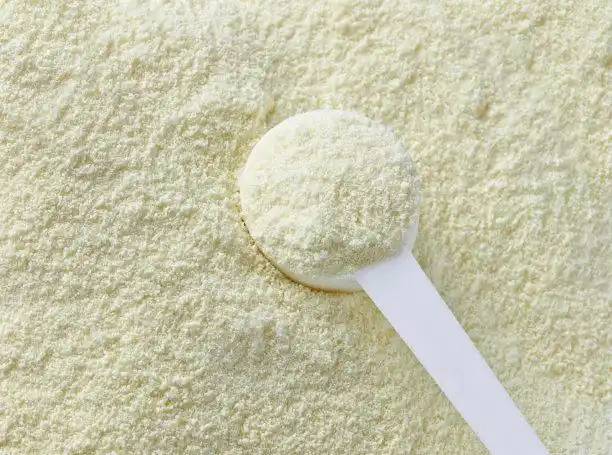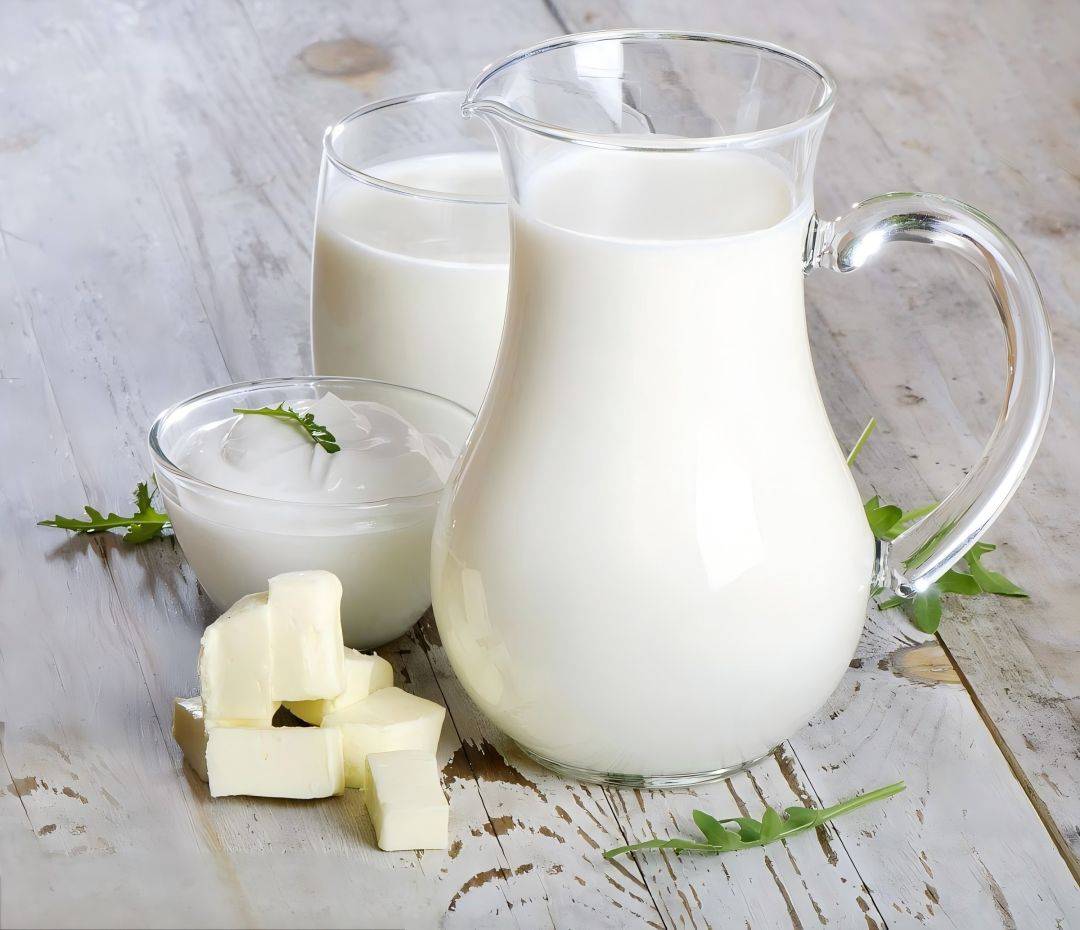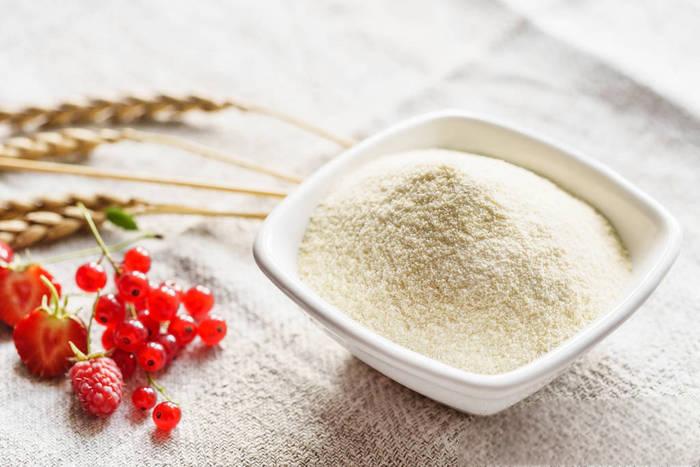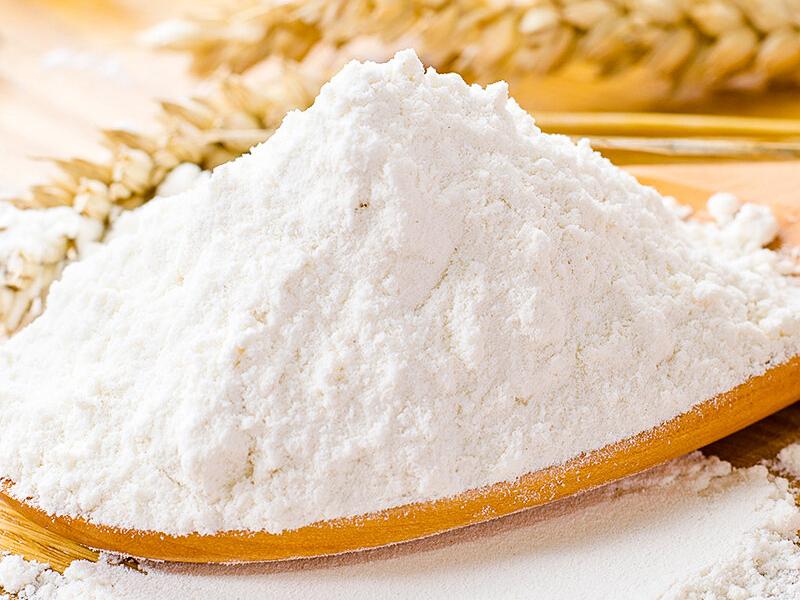What Are the Uses of Galacto Oligosaccharides Powder in Animal Feeding?
In recent years, prebiotics have become a research hotspot as potential alternative antimicrobial additives. Gibson et al. [1] defined prebiotics as substances that are not broken down by human digestive enzymes but promote the growth of beneficial bacteria in the intestine, thereby benefiting host health. Prebiotics mainly include various oligosaccharides, also known as functional oligosaccharides. Cardelle-Cobas et al. [2] found that among the many oligosaccharides, galacto-oligosaccharide (GOS) has received the most recognition, also known as “bifidus factor”, and is the only non-synthetic functional oligosaccharide found in animal milk. Galacto-oligosaccharides are oligosaccharides with 2 to 10 monosaccharides linked to one side of galactose by glycosidic bonds.
They are produced by the enzymatic reaction of β-galactosidase converting galactose, and are a mixture of oligosaccharides [3]. In 2008, China approved galacto-oligosaccharides as a new food additive. Galacto-oligosaccharides have the functions of regulating lipid metabolism, reducing the proliferation of harmful intestinal bacteria, softening stools, improving immunity and antioxidant function. This paper reviews the physicochemical properties, biological functions and application of galacto-oligosaccharides in animal production, in the hope that galacto-oligosaccharides can be better applied in production practice.
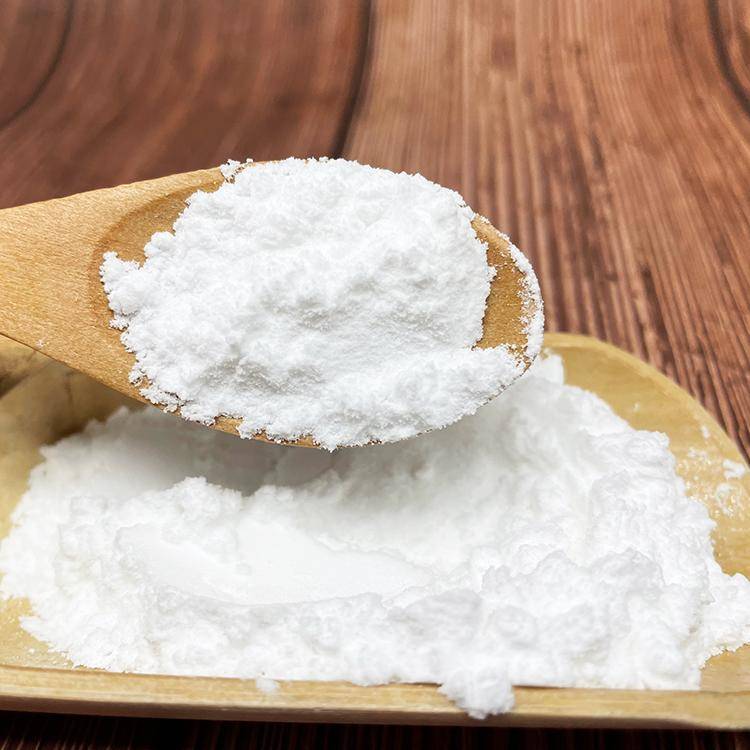
1 Physicochemical properties and biological functions of oligosaccharides
Oligosaccharides are not degraded even at a pH of 3.0 and an environment of 160 °C. Since the human body does not contain enzymes that break down β(1 → 3), β(1 → 4) and β(1 → 6) glycosidic bonds, oligosaccharides cannot be broken down by the human body; they generally do not undergo the Maillard reaction, are highly stable, and have a caloric value of only 8 kJ/g, which is lower than that of sucrose. Therefore, oligosaccharides are currently mainly used as sweeteners to develop low-calorie foods [4 ].
Galacto-oligosaccharides are beneficial to host health. Gibson et al. [5] found that galacto-oligosaccharides are conducive to the proliferation of intestinal bacteria such as bifidobacteria and lactobacilli, which have a beneficial effect on host health [6]. In addition, galacto-oligosaccharides also have a positive effect on the immune system of infants [7-8]. Souza et al. [9] showed that intestinal probiotics such as Bifidobacterium and Lactobacillus can use galacto-oligosaccharides as a carbon source for preferential fermentation and become dominant intestinal bacteria, producing short-chain fatty acids (SCFAs) including lactic acid, propionic acid, and butyric acid, etc., to maintain an acidic environment in the intestine. These intestinal probiotics can also secrete extracellular polysaccharides, which have an adhesion effect on harmful intestinal bacteria, inhibiting their growth and thus maintaining intestinal health. In addition, oligosaccharides are good water-soluble dietary fibres with good water retention capacity, and the short-chain fatty acids produced by the metabolism of intestinal probiotics can stimulate intestinal function, so oligosaccharides also have the function of moistening the intestines and promoting bowel movements [10].
There are two mechanisms by which galacto-oligosaccharides promote the proliferation of beneficial intestinal bacteria: one is whether the bacteria species have the β-galactosidase enzyme that hydrolyzes galacto-oligosaccharides. The β-galactosidase enzyme can bind to the galactose group of galacto-oligosaccharides with a covalent bond and transfer the galactose group to water, hydrolyzing one molecule of galactose and reducing the is reduced [11-12], and finally monosaccharides are formed and absorbed by the small intestinal epithelium and participate in the body's metabolism.
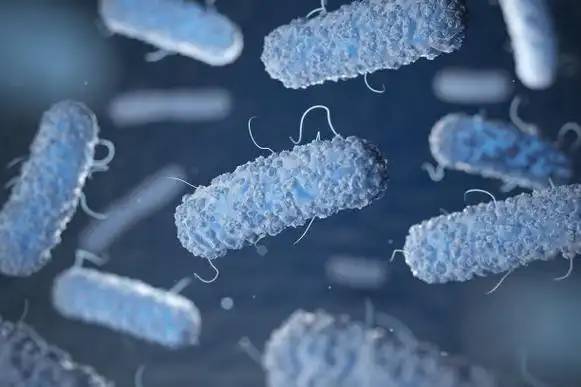
Most studies have found that oligosaccharides inhibit the proliferation of Escherichia coli, but lactose can promote the proliferation of Escherichia coli [12]. Given the same mechanism of oligosaccharide and lactose hydrolysis, oligosaccharides may also induce the intestinal beneficial bacteria to synthesize a large number of β-galactosidase molecules. Second, the degree of polymerization. Compared with oligosaccharides or lactose with a degree of polymerization of 2, oligosaccharides with a degree of polymerization of 3 or 4 are more easily utilized by bifidobacteria. All species of Bifidobacterium and Lactobacillus can utilize oligosaccharides with a degree of polymerisation of 2 [13]. Commercially available oligosaccharides are mixtures of different degrees of polymerisation and are therefore not homogeneous. Therefore, their beneficial effect on intestinal probiotics cannot be simply attributed to a specific degree of polymerisation of oligosaccharides [14].
2 Application of oligosaccharides in animal production
Galacto-oligosaccharides are beneficial to animal health, can regulate the intestinal flora, and have the function of protecting the intestinal barrier [15-16].
2.1 Research on the application of galacto-oligosaccharides in pig production
Early weaning of piglets leads to the underdevelopment of the immune system [17]. The separation of sows and piglets deprives piglets of the nutrients and immunoglobulins they need for growth from maternal milk. In addition, changes in the environment and diet can also cause stress in piglets, which can lead to a series of problems such as low feed intake, intestinal flora imbalance, diarrhea, slow growth, and suppressed immune function. Galacto-oligosaccharides (GOS) have the effect of improving the balance of the intestinal flora in piglets, optimizing the intestinal structure, and activating the intestinal defense mechanism [18]. Li Kenan [19] found that oligosaccharides can improve the average daily weight gain of piglets, increase the levels of serum IL-4, sCD3, and CAT, and reduce the levels of serum TNF-α and MDA. Alizadeh et al. [20] added oligosaccharides to the basal diet of newborn piglets and found that the number of
Lactobacillus and Bifidobacterium in the cecum of piglets in the oligosaccharide group Lactobacillus and Bifidobacterium increased, and the butyric acid concentration increased significantly. Butyric acid has been shown to prevent the colonization of various pathogenic bacteria such as Escherichia coli [21], and butyrate inhibits inflammatory responses and improves intestinal barrier function [22].
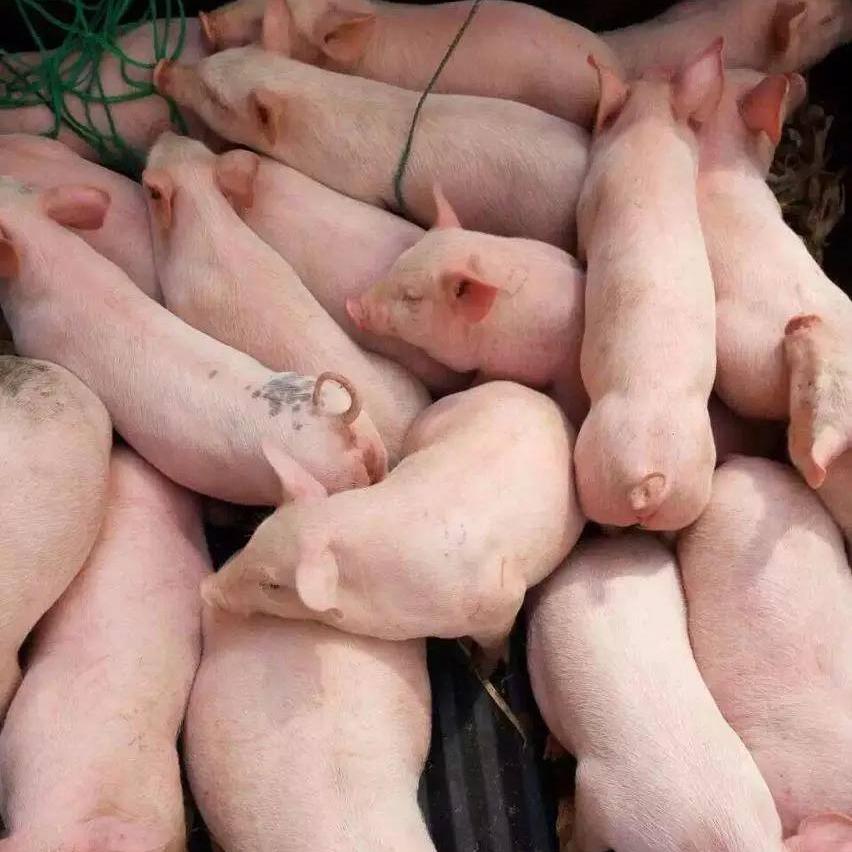
In addition, the addition of oligosaccharides to the piglets' diet resulted in an upregulation of mRNA expression of tight junction proteins in the intestine. Intestinal epithelial cells are connected by tight junction proteins, and the intestinal epithelium not only digests and absorbs nutrients, but also acts as a physical barrier against potential harmful factors in the intestine, such as bacteria, toxins and viruses [20]. Tian et al. [23] studied the effect of oligosaccharides administered to newborn piglets on the development of the jejunum and found that that the oligosaccharide group can reduce the depth of the crypts in the jejunum, enhance the functional development of the jejunum in suckling pigs, and improve the growth performance of suckling pigs.
Tzortzis et al. [24] used in vitro 16S rRNA targeted probes for in situ fluorescence to study the changes in the oligosaccharide group on total bacteria, bifidobacteria, lactobacilli, pseudomonads and Clostridium group. The test showed that the number of bifidobacteria in the fermenter, which represents the colon, increased. In addition, oligosaccharides significantly inhibited the attachment of Escherichia coli and Salmonella typhimurium to HT29 cells. Tzortzis et al. [24] showed in a pig study that the addition of 4% oligosaccharides increased the bifidobacterial density and acetate concentration in the intestine and lowered the pH, indicating that oligosaccharides have great probiotic potential.
Rajauria et al. [25] evaluated the effect of oligosaccharides on the antioxidant status of the longissimus dorsi muscle by adding oligosaccharides to the pig diet 5 weeks before slaughter. The results showed that the addition of oligosaccharides significantly improved the antioxidant capacity of the muscle, which may be related to the prebiotic effect of oligosaccharides. Broekaert et al. [26] showed that the antioxidant potential of prebiotics is related to their ferulic content. Ferulic acid has strong in vitro antioxidant properties [27]. The samples of the longissimus dorsi muscle in the vacuum packaging bag were analyzed after being stored at 4 °C for 15 d. Compared with the control group, the total microbial activity of the longissimus dorsi muscle was reduced, indicating a significant antibacterial effect.
2.2 Research on the application of oligosaccharides in poultry production
Research on the application of oligosaccharides in poultry production has mainly focused on the effects on the types of intestinal microorganisms and serum antioxidant indicators. Azcarate-Peril et al. [28] used 1-day-old female Bresse chickens as the research object and evaluated the effect on the types of intestinal microorganisms through a 9-week trial. The results showed that after being challenged with a strong strain of Salmonella typhimurium in the fifth week of the trial, the number of Christensenellaceae and Lactobacillus reuteri in the intestines of animals in the oligosaccharide group increased Christensenellaceae and Lactobacillus reuteri increased, and the clearance rate of Salmonella in the intestine was also improved. Christensenellaceae flora has been shown to be related to body mass index (BMI) [29], and Lactobacillus reuteri is a strain that contains many recognized probiotic properties. Li Yanming et al. [30] studied the effect of adding 0.1% oligosaccharides to the feed on the antioxidant function of ducks. The results showed that the activity of serum T-AOC, GSH-PX, T-SOD, and POD in the group with added oligosaccharides was higher than that in the control group, but the MDA activity was lower than that in the control group; the muscle T-SOD was significantly higher than that in the control group, indicating that adding oligosaccharide galactan can improve the antioxidant capacity of ducks to varying degrees.

2.3 Research on the application of oligosaccharide galactan in ruminant production
There have been relatively few studies on the use of galacto-oligosaccharides in ruminant production. Wang Zhihang et al. [31] gavaged Yanbian yellow cattle calves with galacto-oligosaccharides, and the results showed that serum IgG levels and IL-2 mRNA expression were elevated, indicating that galacto-oligosaccharides can improve the immune function of calves.
2.4 Application research on the use of galacto-oligosaccharides in rodent production
Zhang Dongjie et al. [32] found that oligosaccharides can improve the immune level of mice. Zheng Shan et al. [33] gavaged mice with different doses of oligosaccharides, and the results showed that oligosaccharides can improve the immune level of mice. Leforestier et al. [34] evaluated the effects of galacto-oligosaccharide intake on the morphology of the small intestinal mucosa, the activity of the brush border membrane enzyme and the mucin content in mice. The results showed that mice that consumed galacto-oligosaccharides for 4 weeks were able to increase the mucin content of the small intestinal mucosa and the activity of sucrase in intestinal epithelial cells without changing the height of the villi.

Dai et al. [35] studied the preventive effect of a newly synthesized α-galactooligosaccharide mixture on the prevention of sodium dextran sulfate-induced colitis in mice. The results showed that α-galactooligosaccharide mixture can significantly reduce fecal hemoglobin levels, prevent shortening of the colon length, reduce colonic inflammatory response, and alleviate the upregulation of cyclooxygenase-2 induced by sodium dextran sulfate. Yanahira et al. [36] found that galacto-oligosaccharides cannot be utilized by the intestinal mucosal homogenate, but can be selectively utilized by beneficial bacteria in the intestine. Cheng et al. [37] used 16S rRNA analysis and metabolomics to analyze the effects of galacto-oligosaccharides on microorganisms and metabolites. The results showed that compared with the control group, the fatty acid synthesis and blood triglyceride levels of galacto-oligosaccharide-fed mice were significantly lower, indicating that galacto-oligosaccharides can improve lipid metabolism in mice. were significantly lower, indicating that oligosaccharides can improve lipid metabolism in mice.
3 Conclusion
Galacto-oligosaccharides have many prebiotic functions in animals. Studies on their application in animal production have shown that adding an appropriate dose of galacto-oligosaccharides to the feed can promote animal growth, improve the intestinal flora, regulate the immune function of the body, and activate the intestinal defense mechanism. Given the many prebiotic functions of galacto-oligosaccharides, they have broad prospects for application in animal production.
Reference
[1] Gibson G R, Roberfroid M B. Dietary modulation of the human colonic microbiota: introducing the concept of prebiotics[J]. The Journal of Nutrition, 1995, 125(6): 1401-1412.
[2] Cardelle-Cobas A, Corzo N, Olano A, et al. Galactooligosaccharides derived from lactose and lactulose: influence of structure on Lactobacillus, Streptococcus and Bifidobacterium growth[J]. International Journal of Food Microbiology, 2011, 149(1): 81-87.
[3] González-Delgado I, Segura Y, Martín A, et al. β-galactosidase covalent immobilization over large-pore mesoporous silica supports for the production of high galacto-oligosaccharides (GOS)[J]. Microporous & Mesoporous Materials, 2017, 257: 51-61.
[4] Sun Changwen, Zhou Qingtao, Wang Chao, et al. Overview of oligosaccharides and analysis of their functional effect mechanism. Shandong Food Fermentation, 2015, 178(3): 55-58.
[5] Gibson G R, McCartney A L, Rastall R A. Prebiotics and resistance to gastrointestinal infections[J]. British Journal of Nutrition, 2005, 93(S1): S31-S34.
[6] Tuohy K M, Rouzaud G C M, Bruck W M, et al. Modulation of the human gut microflora towards improved health using prebiotics-assessment of efficacy[J]. Current Pharmaceutical Design, 2005, 11(1): 75-90.
[7] Fanaro S, Marten B, Bagna R, et al. Galacto-oligosaccharides are bifidogenic and safe at weaning: a double-blind randomized multicenter study.[J]. Journal of Pediatric Gastroenterology & Nutrition, 2009,48(1): 82-88.
[8]Jeurink P V, Van Esch B C, Rijnierse A, et al. Mechanisms underlying immune effects of dietary oligosaccharides[J]. American Journal of Clinical Nutrition, 2013, 98(2): 572S-577S.
[9] Souza K L, Gurgul-Convey E, Elsner M, et al. Interaction between pro- inflammatory and anti-inflammatory cytokines in insulin-producing cells[J].Journal of Endocrinology, 2008, 197(1): 139-150.
[10] Sheng Qinghai, Geng Qian, Xu Li, et al. Research on the laxative function of oligosaccharide galactose [J]. China Food Additives, 2007 (1): 62-65.
[11] Zechel D L, Withers S G. Glycosidase mechanisms: anatomy of a finely tuned catalyst[J]. Accounts of chemical research, 2000, 33(1): 11-18.
[12] Wang Jingyan, Zhu Shenggeng, Xu Changfa. Biochemistry [M]. Beijing: Higher Education Press, 2002.
[13] Amaretti A, Bernardi T, Tamburini E, et al. Kinetics and metabolism of Bifidobacterium adolescentis MB 239 growing on glucose, galactose, lactose, and galactooligosaccharides[J]. Applied and Environmental Microbiology, 2007, 73(11): 3637-3644.
[14] Adamczak M, Charubin D, Bednarski W. Influence of reaction medium composition on enzymatic synthesis of galactooligosaccharides and lactulose from lactose concentrates prepared from whey permeate[J]. Chemical Papers, 2009, 63(2): 111-116.
[15] Boehm G, Moro G. Structural and functional aspects of prebiotics used in infant nutrition[J]. The Journal of Nutrition, 2008, 138(9): 1818S-1828S.
[16] Matsuki T, Tajima S, Hara T, et al. Infant formula with galacto- oligosaccharides (OM55N) stimulates the growth of indigenous bifidobacteria in healthy term infants[J]. Beneficial Microbes, 2016, 7(4): 453-461.
[17] Liu Jingyun, Zhang Yingjie. Physiological characteristics and nutritional countermeasures for early weaned piglets [J]. Pig Science, 2008 (2): 52-54.
[18] Dudink S, Simonse H, Marks I, et al. Announcing the arrival of enrichment increases play behaviour and reduces weaning-stress- induced behaviours of piglets directly after weaning[J]. Applied Animal Behaviour Science, 2006, 101(1/2): 86-101.
[19] Li, K. Effects of oligosaccharides on growth performance, immunity and antioxidant function in weaned piglets [D]. Hohhot: Inner Mongolia Agricultural University, 2018.
[20] Alizadeh A, Akbari P, Difilippo E, et al. The piglet as a model for studying dietary components in infant diets: effects of galacto- oligosaccharides on intestinal functions[J]. British Journal of Nutrition, 2016, 115(4): 605-618.
[21] Campbell J M, Fahey Jr G C, Wolf B W. Selected indigestible oligosaccharides affect large bowel mass, cecal and fecal short-chain fatty acids, pH and microflora in rats[J]. The Journal of Nutrition, 1997, 127(1): 130-136.
[22] Hamer H M, Jonkers D, Venema K, et al. The role of butyrate on colonic function[J]. Alimentary Pharmacology & Therapeutics, 2008, 27(2): 104-119.
[23] Tian S, Wang J, Yu H, et al. Effects of galacto-oligosaccharides on growth and gut function of newborn suckling piglets[J]. Journal of Animal Science and Biotechnology, 2019(1): 197-207.
[24] Tzortzis G, Goulas A K, Gee J M, et al. A novel galactooligosaccharide mixture increases the bifidobacterial population numbers in a continuous in vitro fermentation system and in the proximal colonic contents of pigs in vivo[J]. The Journal of Nutrition, 2005, 135(7): 1726-1731.
[25] Rajauria G, Draper J, McDonnell M, et al. Effect of dietary seaweed extracts, galactooligosaccharide and vitamin E supplementation on meat quality parameters in finisher pigs[J]. Innovative Food Science & Emerging Technologies, 2016, 37: 269-275.
[26] Broekaert W F, Courtin C M, Verbeke K, et al. Prebiotic and other health-related effects of cereal-derived arabinoxylans, arabinoxylan- oligosaccharides, and xylooligosaccharides[J]. Critical Reviews in Food Science and Nutrition, 2011, 51(2): 178-194.
[27] Ferguson L R, Zhu S, Harris P J. Antioxidant and antigenotoxic effects of plant cell wall hydroxycinnamic acids in cultured HT ‐29 cells[J]. Molecular Nutrition & Food Research, 2005, 49(6): 585-593.
[28] Azcarate-Peril M A, Butz N, Cadenas M B, et al. An attenuated Salmonella enterica serovar Typhimurium strain and galacto- oligosaccharides accelerate clearance of Salmonella infections in poultry through modifications to the gut microbiome[J]. Applied and Environmental Microbiology, 2018, 84(5): DOI: 10.1128/AEM.02526- 17.
[29] Goodrich J K, Waters J L, Poole A C, et al. Human genetics shape the gut microbiome[J]. Cell, 2014, 159(4): 789-799.
[30] Li YM, Huang XW, Ouyang HP, et al. Effects of oligosaccharides and photosynthetic bacteria on the antioxidant capacity of ducks [J]. Animal Husbandry and Veterinary Medicine, 2012 (S1): 285-286.
[31] Wang Zhihang, Jiang Chengzhe, Cui Mingxun, et al. Effect of oligosaccharides on the bacterial flora, blood indicators and growth performance of calves from Yanbian cattle [J]. Journal of Animal Nutrition, 2011, 23 (7): 1247-1252.
[32] Zhang Dongjie, Chen Yun, Zhao Shuping, et al. Research on the immune function enhancement of oligosaccharides [J]. China Food Additives, 2012 (4): 141-146.
[33] Zheng Shan, Du Hongju, Ma Ling, et al. Effect of oligosaccharides on immune function in mice [J]. Capital Public Health, 2013, 7 (4): 163-165.
[34] Leforestier G, Blais A, Blachier F, et al. Effects of galacto-oligosaccharide ingestion on the mucosa-associated mucins and sucrase activity in the small intestine of mice[J]. European Journal of Nutrition, 2009, 48(8): 457-464.
[35] Dai Z, Feng S, Liu A, et al. Anti-inflammatory effects of newly synthesized α-galacto-oligosaccharides on dextran sulfate sodium- induced colitis in C57BL/6J mice[J]. Food Research International, 2018, 109: 350-357.
[36] Yanahira S, Morita M, Aoe S, et al. Effects of lactitol-oligosaccharides on the intestinal microflora in rats[J]. Journal of Nutritional Science & Vitaminology, 1995, 41(1): 83-94.
[37] Cheng W, Lu J, Lin W, et al. Effects of a galacto-oligosaccharide- rich diet on fecal microbiota and metabolite profiles in mice[J]. Food & Function, 2018, 9(3): 1612-1620.


 English
English French
French Spanish
Spanish Russian
Russian Korean
Korean Japanese
Japanese